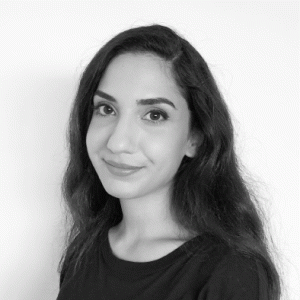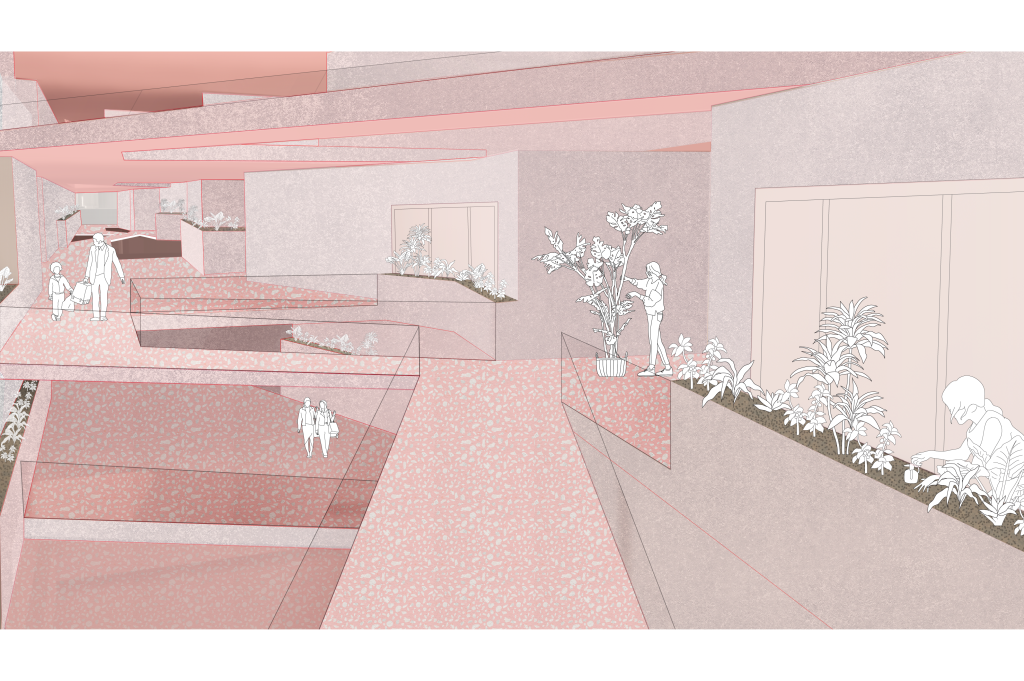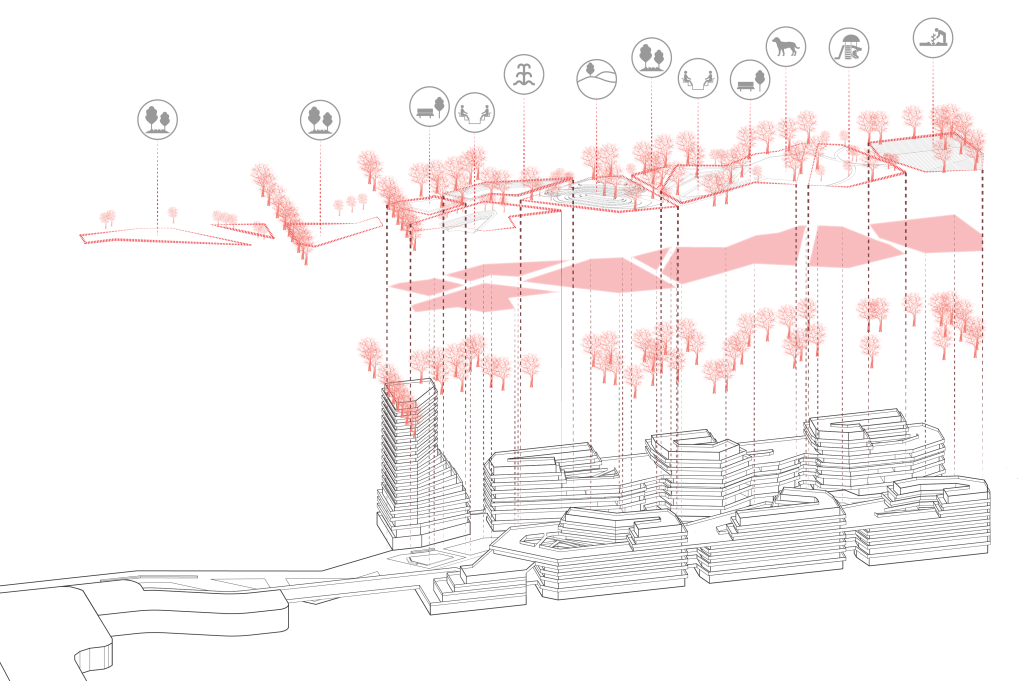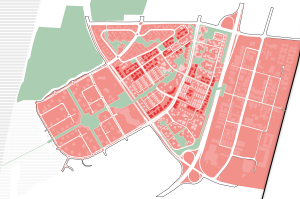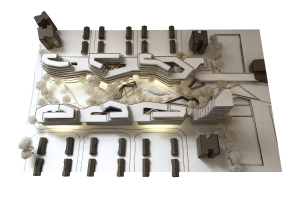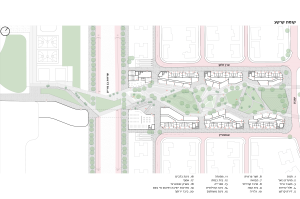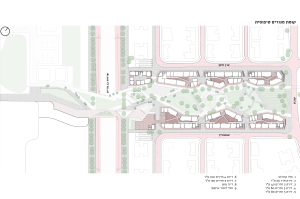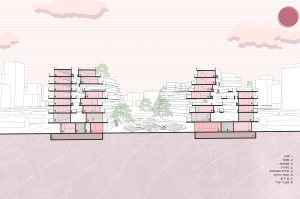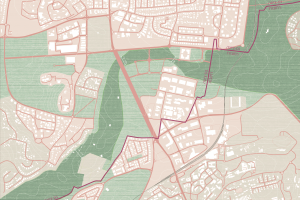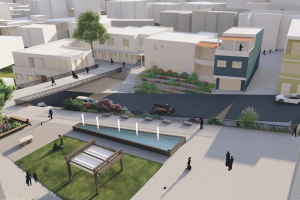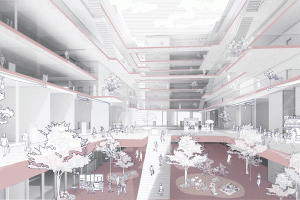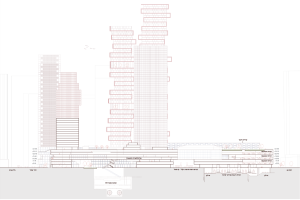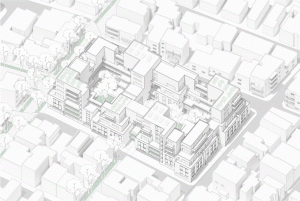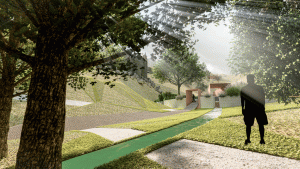Renewable Spaces
In the last few years, the old neighborhoods in Israel, which were built in the years after the establishment of the state, are undergoing a process of urban renewal. The current approach mostly focuses on increasing the number of housing units in a building or a single cluster of buildings, and thus it ignores strengths that exist in the old neighborhoods, such as their abundance of open public spaces. The planning of these areas was influenced by models that aspired to create a natural and communal environment, in contrast to the alienation of the industrial city. These ideas ultimately failed due to their incompatibility with the climatic conditions in Israel and the need for intensive maintenance.
Today, these areas are often neglected and do not fulfill their social and environmental potential. The project examines the Kiryat Nordau neighborhood, one of the oldest and largest neighborhoods in Netanya, which was established in the 1950s to accommodate immigrants and has since expanded. Today, its condition is often neglected, and it is perceived as a poor enclave in the heart of new and strong neighborhoods. In addition to being disconnected from its environment, the neighborhood is not cohesive within itself. The project focuses on open public areas in the heart of the neighborhood and offers spatial renewal that creates access to the open public area and includes mixed-use facades that offer a diverse mix of housing combined with the open public area to create a heart that captures the neighborhood and reconnects it to its surroundings. The landscape design is adapted to the existing mature trees and active urban facades directed to the open public space.


